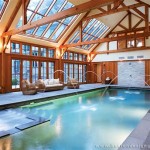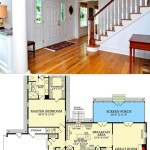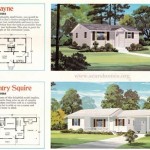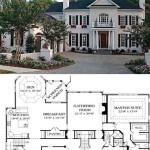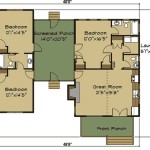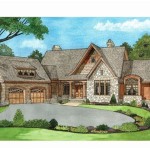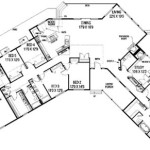English Cottage Style Home Plans: A Comprehensive Overview
English Cottage style home plans evoke a sense of charm, warmth, and timeless appeal. Rooted in the rural landscapes of England, these designs prioritize comfort, functionality, and a connection to nature. Characterized by their quaint features, asymmetrical layouts, and use of natural materials, English Cottage homes offer a distinctive aesthetic that continues to captivate homeowners seeking a cozy and inviting living space.
Understanding the core elements of English Cottage style is crucial when selecting or designing a home plan. This article provides a detailed exploration of the defining characteristics, common features, and considerations associated with English Cottage style home plans.
Key Architectural Features of English Cottage Style Homes
Several distinct architectural features define the English Cottage style. These elements contribute to the overall charm and character of the design, creating a welcoming and comfortable atmosphere. Understanding these features is essential for identifying and appreciating the nuances of this architectural style.
Asymmetrical Design: Unlike many traditional architectural styles that emphasize symmetry, English Cottage homes typically feature asymmetrical layouts. This intentional asymmetry contributes to their unique character and allows for a more organic and visually interesting design. Rooflines may be uneven, windows may be placed at varying heights, and the overall structure often appears to have grown organically over time.
Steeply Pitched Roofs: A hallmark of English Cottage architecture is the steeply pitched roof. These roofs are not only aesthetically pleasing but also functional, providing excellent drainage in regions with heavy rainfall. Gables, dormers, and overhanging eaves are common features that further enhance the visual appeal of the roofline.
Prominent Chimneys: The chimney is often a focal point of the English Cottage home. Typically constructed of brick or stone, chimneys are often large and prominent, reflecting the importance of fireplaces for heating and gathering within the home. Decorative chimney pots are another common detail that adds to the overall charm.
Multi-Paned Windows: Windows in English Cottage homes are typically multi-paned, often featuring small, divided lights. Casement windows, which swing outward, are a popular choice, although other window styles such as double-hung windows are also used. The windows are often adorned with window boxes filled with flowers, further enhancing the connection to nature.
Natural Materials: The use of natural materials is central to the English Cottage style. Exterior walls are commonly clad in stone, brick, or stucco, often combined with wood accents. Roofing materials may include slate, wood shingles, or clay tiles. Interior finishes often incorporate exposed beams, wood floors, and natural stone fireplaces.
Arched Doorways and Windows: Arched doorways and windows add a touch of elegance and softness to the English Cottage design. These curved elements contrast with the straight lines of the walls and roof, creating visual interest and enhancing the sense of warmth and welcome.
Interior Layout and Design Considerations
The interior layout of an English Cottage style home typically prioritizes functionality, comfort, and a connection to the outdoors. Common features include open-concept living spaces, cozy nooks, and an emphasis on natural light. Careful consideration of interior design elements is crucial for creating a cohesive and authentic English Cottage atmosphere.
Open-Concept Living: While traditional English cottages may have featured smaller, more defined rooms, modern English Cottage home plans often incorporate open-concept living spaces. This allows for greater flexibility and flow between the living room, dining area, and kitchen, creating a more spacious and social environment.
Cozy Nooks: Despite the trend towards open-concept living, English Cottage homes still often feature cozy nooks and alcoves. These smaller, more intimate spaces provide a sense of refuge and offer opportunities for reading, relaxing, or enjoying a quiet moment. Window seats, inglenook fireplaces, and built-in bookshelves are common examples of such features.
Emphasis on Natural Light: Maximizing natural light is crucial for creating a bright and cheerful interior. Large windows, skylights, and strategically placed mirrors can help to illuminate the living spaces. Light-colored paint and fabrics also contribute to a brighter and more welcoming atmosphere.
Warm and Inviting Color Palettes: English Cottage interiors typically feature warm and inviting color palettes. Soft neutrals such as creams, beiges, and grays are often used as a base, accented with pops of color inspired by nature. Floral patterns, botanical prints, and natural textures are also common elements.
Natural Wood Finishes: Natural wood finishes are essential for creating an authentic English Cottage look. Exposed beams, wood floors, and wood furniture add warmth and character to the interior. Reclaimed wood and antique pieces are particularly well-suited to this style.
Fireplaces as Focal Points: Fireplaces are often the focal point of the living room in an English Cottage home. Constructed of stone, brick, or a combination of materials, fireplaces provide warmth and create a sense of coziness. Mantels are often adorned with decorative objects and family heirlooms.
Country-Style Kitchens: English Cottage kitchens typically feature a country-style aesthetic. Elements such as exposed shelving, farmhouse sinks, butcher block countertops, and vintage-inspired appliances are common. A large kitchen table serves as a gathering place for meals and conversation.
Considerations When Choosing an English Cottage Home Plan
Selecting the right English Cottage home plan requires careful consideration of various factors, including lot size, budget, lifestyle, and desired level of authenticity. Evaluating these factors will help ensure that the chosen plan meets the homeowner's needs and preferences.
Lot Size and Orientation: The size and orientation of the building lot will influence the choice of home plan. English Cottage homes are often best suited for smaller, more secluded lots, but they can also be adapted to larger properties. The orientation of the home should maximize natural light and take advantage of scenic views.
Budget: The budget is a crucial consideration when selecting a home plan. English Cottage homes can range in price depending on the size, materials, and level of customization. It is important to establish a realistic budget and choose a plan that fits within those constraints.
Lifestyle: The homeowner's lifestyle should also be considered when choosing a home plan. Factors such as the number of occupants, entertaining habits, and hobbies will influence the desired layout and features. For example, a family with young children may prioritize a large backyard and a playroom, while a couple who enjoy entertaining may prefer a spacious living room and a well-equipped kitchen.
Desired Level of Authenticity: The desired level of authenticity will impact the selection of architectural details and interior finishes. Some homeowners may prefer a more traditional and historically accurate interpretation of the English Cottage style, while others may opt for a more modern and updated approach. It is important to clearly define personal preferences and choose a plan that reflects those preferences.
Energy Efficiency: Incorporating energy-efficient features into the English Cottage home plan can help to reduce utility costs and minimize environmental impact. Features such as energy-efficient windows, insulation, and appliances can significantly improve the home's overall performance.
Local Building Codes and Regulations: It is essential to comply with all local building codes and regulations when designing and constructing an English Cottage home. These codes may dictate specific requirements for structural integrity, fire safety, and accessibility. Consulting with a qualified architect or builder can help to ensure compliance.
Future Needs: Consider future needs when selecting a home plan. Will the home accommodate a growing family or aging in place? Choosing a plan that offers flexibility and adaptability can help to ensure that the home remains suitable for many years to come. This might involve choosing a plan that allows for future additions or modifications.
In conclusion, English Cottage style home plans offer a unique blend of charm, functionality, and connection to nature. The architectural features, interior design considerations, and planning aspects detailed within this article are essential for understanding and appreciating the nuances of this timeless architectural style.

1920s English Cottage Small Homes Books Of A Thousand R Tissington Floor Plans Vintage House

1935 English Cottage Style Ladies Home Journal Small 20th Century House Plans Floor

English Cottage Style Home Plan 6970am Architectural Designs House Plans

1927 Hepburn By William A Radford Cottage Floor Plans Style House Vintage

English Cottage House Plans Plank And Pillow

English Cottage House Plans Floor Designs Houseplans Com

English Cottage House Plans Floor Storybook Homes Plan

English Cottage House Plans Storybook Style

English Cottage House Plans Plank And Pillow

1928 Modern English Revival House Plan Cottage Plans

